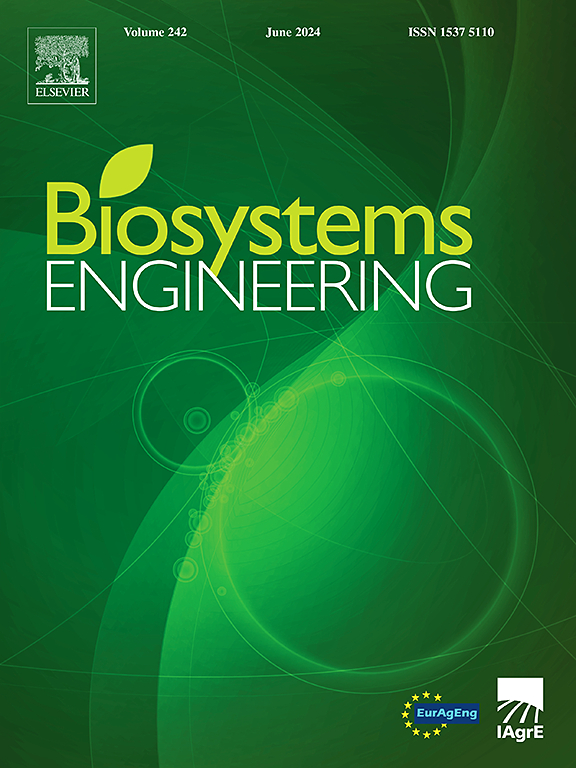Prediction of berry sunburn damage with machine learning: Results on grapevine (Vitis vinifera L.)
IF 4.4
1区 农林科学
Q1 AGRICULTURAL ENGINEERING
引用次数: 0
Abstract
Due to climate change, heatwaves and prolonged periods of drought are more frequent and cause serious consequences to yield and berry composition of grapevine (Vitis vinifera L.). In response to this challenge, machine learning model was built to predict sunburn damages on the berries. The trial was conducted over two years (2022–2023) in a not irrigated vineyard of cv. Sangiovese, trained to vertical shoot positioning (VSP) spur pruned cordon. The vineyard was monitored from veraison to harvest with a weather station and thermocouples connected to a wireless sensor network (WSN). The evolution of the sunburn damages was visually evaluated twice a week. The damages appeared soon after veraison and the severity of the symptoms increased when heatwaves occurred. Weather station data including air temperature, solar radiation and relative humidity were analysed and used to build prediction models for sunburn damage. Ten parameters were derived from raw data to supply the prediction models of neural network (NN) and Support Vector Machine (SVM) optimised with gamma tuning. The NN achieved 90.32% accuracy in cross-validation, followed by SVM with 86.22% using radial kernel. The machine learning model was created using TensorFlow framework and it is available in the mobile phone application SHEET which will alert grape growers about the risk of sunburn damages on their orchards.

求助全文
约1分钟内获得全文
求助全文
来源期刊

Biosystems Engineering
农林科学-农业工程
CiteScore
10.60
自引率
7.80%
发文量
239
审稿时长
53 days
期刊介绍:
Biosystems Engineering publishes research in engineering and the physical sciences that represent advances in understanding or modelling of the performance of biological systems for sustainable developments in land use and the environment, agriculture and amenity, bioproduction processes and the food chain. The subject matter of the journal reflects the wide range and interdisciplinary nature of research in engineering for biological systems.
 求助内容:
求助内容: 应助结果提醒方式:
应助结果提醒方式:


